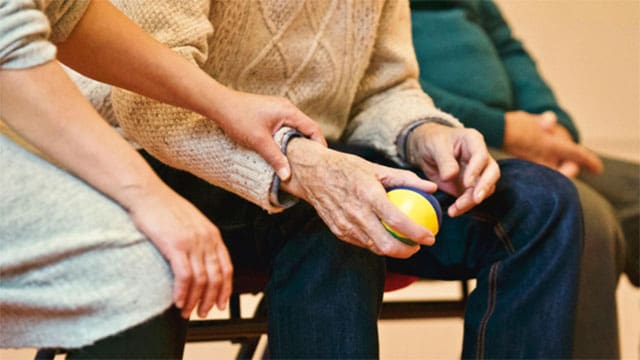As we step into the later years of life, focusing on our health becomes the main thing, pushing us towards a phase of life filled with happiness and energy. However, even as we start enjoying the leisure and freedom that come with these years, we’re hit with a hard truth: the costs of healthcare can be a significant load for many who have retired.
Research shows that retirees are often spending around $4,300 every year just on health-related expenses. This eye-opening number highlights how crucial it is to keep our health and life satisfaction at the forefront during our retirement.

Financial Stability: The Foundation of Retirement Well-Being
Securing your financial future as you approach retirement isn’t just about scraping by; it’s about living comfortably and making the most of your later years. But reaching this level of security demands thoughtful planning and an exploration of all options. For a lot of people looking ahead to retirement, their house is a major part of their financial picture. And this is where reverse mortgage loans enter the picture. By tapping into the equity of their home, they can unlock a substantial flow of funds to help achieve their retirement objectives.
Here’s where consulting with a reliable reverse mortgage company can be beneficial. Such companies enable individuals aged 62 and over to convert part of their home’s equity into accessible funds, all without having to sell their home or commit to new monthly mortgage outlays. The repayment of this loan only occurs once the homeowner either relocates or passes away, usually through the house’s sale.
Choosing to work with an esteemed reverse mortgage provider means gaining access to specialized advice and assistance every step of the way. From gaining a clear comprehension of what reverse mortgages can offer to smoothly going through the application and getting approved, having seasoned experts by your side can ease worries and bolster confidence in your financial choices for retirement.
Physical Health: Staying Active and Fit
Staying in shape is a key part of living well into retirement. As we get older, it’s vital to stay active to keep our movement smooth, our bodies flexible, and our overall condition in top shape. Exercising regularly not only builds our physical strength but also boosts our mental and emotional states.
Integrating exercise into our daily lives can be simpler than it seems. Basic actions such as walking, tending to a garden, or engaging in gentle stretches can greatly improve our physical state. Many communities for the retired offer exercise programs tailored for older individuals, creating a welcoming space to maintain an active lifestyle while mingling with others.
From a calm walk around the block to water exercise classes at the community pool or group workout sessions at the local center, retirement brings numerous chances to engage in physical activities and maintain a healthy lifestyle.
Mental Well-Being: Nurturing Cognitive Health
Mental health holds equal significance as physical health, especially during the later stages of life. Activating our mental capacities and remaining intellectually engaged not only wards off mental deterioration but also amplifies our life’s overall satisfaction. Thankfully, a variety of strategies exist to invigorate our intellect and bolster brain health as we age.
Engaging in activities such as reading, solving puzzles, and playing games can maintain mental sharpness and vigilance. Diving into new skills or indulging in hobbies and passions can also provide stimulation and a feeling of achievement. Moreover, contributing time to volunteer work or getting involved in community events can create avenues for social interactions and purposeful involvement, crucial elements for sustaining mental wellness.
Creating a Supportive Environment: Accessing Resources and Community
Fostering a nurturing space is crucial for encouraging health and vitality during one’s golden years. Being able to tap into medical care, places for physical activity, and avenues for social engagement is critical for preserving one’s physical, mental, and emotional health. Living communities designed for retirees offer an assortment of amenities and aids tailored to meet the desires and necessities of their inhabitants.
With everything from fitness centers and health programs on the premises to clubs for socializing and events for the whole community, these living spaces give retirees avenues to remain lively, involved, and in touch with fellow residents. Furthermore, many such communities grant access to medical care facilities, including clinics, rehab centers, and health maintenance programs, making sure that individuals have what they need to keep thriving.
By diving into activities with fellow residents and taking part in communal happenings, we forge valuable bonds and networks of support that elevate our quality of life during our retirement years. Whether it’s getting involved in a reading group, taking part in an exercise session, or helping out at a community charity, there are endless opportunities to craft a nurturing and rewarding space that supports health and vitality in our later years.

Final Thoughts
Making health and well-being a top focus is key to experiencing a rich and lively phase of life post-career. Actively managing your finances, keeping up with physical fitness, fostering mental acuity, and supporting your emotional health are critical steps to thrive during these years. Retirement goes beyond mere leisure; it’s an opportunity to fully engage with life and savor each experience.
This content is a joint venture between our publication and our partner. We do not endorse any product or service in the article.

